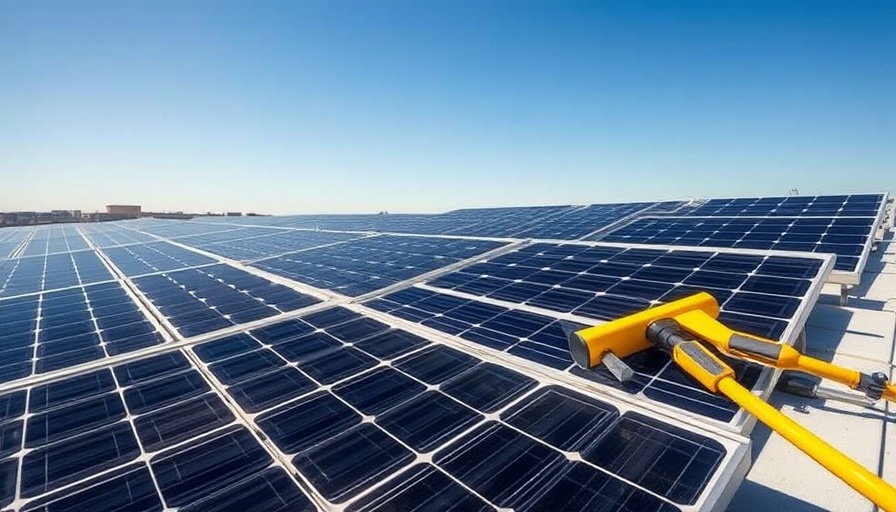
Weighing the Options: Keeping or Removing North-Facing Solar Panels?
As homeowners increasingly look for sustainable solutions and ways to reduce energy costs, the decision between retaining or removing north-facing solar panels has become a hot topic in Maryland. Some argue the panels may not provide sufficient energy, while others suggest their continued presence could contribute positively to energy bills over time. With dynamic weather patterns and evolving technology, understanding the pros and cons can empower homeowners to make the right decision.
The Common Misconceptions About North-Facing Panels
Many homeowners are often advised that north-facing solar panels are less efficient than their south-facing counterparts. While it is true that panels facing south receive more sunlight and are thus more productive, dismissing north-facing panels entirely is an oversimplification. Recent studies have shown that north-facing panels can still generate electricity, albeit at lower rates, particularly in regions with milder climates like Maryland. Hence, homeowners should consider the specific conditions of their setup before making a definitive decision.
Understanding Energy Production by Orientation
According to energy experts, solar panel production drastically changes based on orientation. South-facing panels are known to capture the most sunlight throughout the day, but that doesn’t mean panels on the north face cannot contribute. Research indicates that even during the winter months when sunlight is more limited, north panels can still contribute a modest amount of energy. Homeowners should review their past energy production records to assess how much energy their north-facing panels generate, providing valuable insights into making an informed decision.
Cost-Benefit Analysis of Removing Panels
When considering removing panels, it's essential to perform a thorough cost-benefit analysis. Removing the panels incurs labor costs, while keeping them means maintaining equipment that may yield lesser energy production. Yet, for many homeowners, the value of having a diversified energy source—even from a reduced-output panel—can be worth the investment. Additionally, the depreciation related to removing panels is a financial consideration, as the entire solar system may decrease in value without it.
The Environmental Angle: Green Energy Commitment
For eco-conscious homeowners, every solar panel in place represents a commitment to sustainability and reducing carbon footprints. Keeping those panels on the north side can signify ongoing support for renewable energy, which is becoming ever more important as climate concerns rise globally. Maintaining all panels, regardless of output, could foster a deeper community commitment to green initiatives that benefit larger environmental goals.
Practical Insights and Tips for Homeowners
1. **Review Your Energy Output:** Analyze production data to assess how your north-facing panels are performing. If they generate meaningful energy, consider keeping them.
2. **Consult Local Experts:** Reach out to solar energy companies for tailored insights specific to your installation and geographic conditions.
3. **Consider System Upgrades:** If the current setup doesn’t perform well, consider optimizing the system with technology such as microinverters or battery storage that can ensure higher efficiency.
Future Predictions: The Evolving Solar Landscape
As solar technology evolves, it is vital for homeowners to remain vigilant and informed regarding advancements that may enhance the performance of existing systems. New developments in technology can significantly alter the performance ratios of north-facing panels, potentially making them more viable in the future. Homeowners should stay in tune with local markets and advancements to capitalize on any opportunities that arise.
In conclusion, the decision to keep or remove solar panels on the north side of a roof requires careful consideration of various factors—from energy output to environmental impact. Balancing personal sustainability goals with financial considerations will be key for Maryland homeowners. As the landscape of solar energy continues to evolve, staying informed and proactive can lead to more beneficial decisions down the road.
 Add Row
Add Row  Add
Add 



Write A Comment